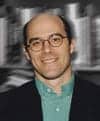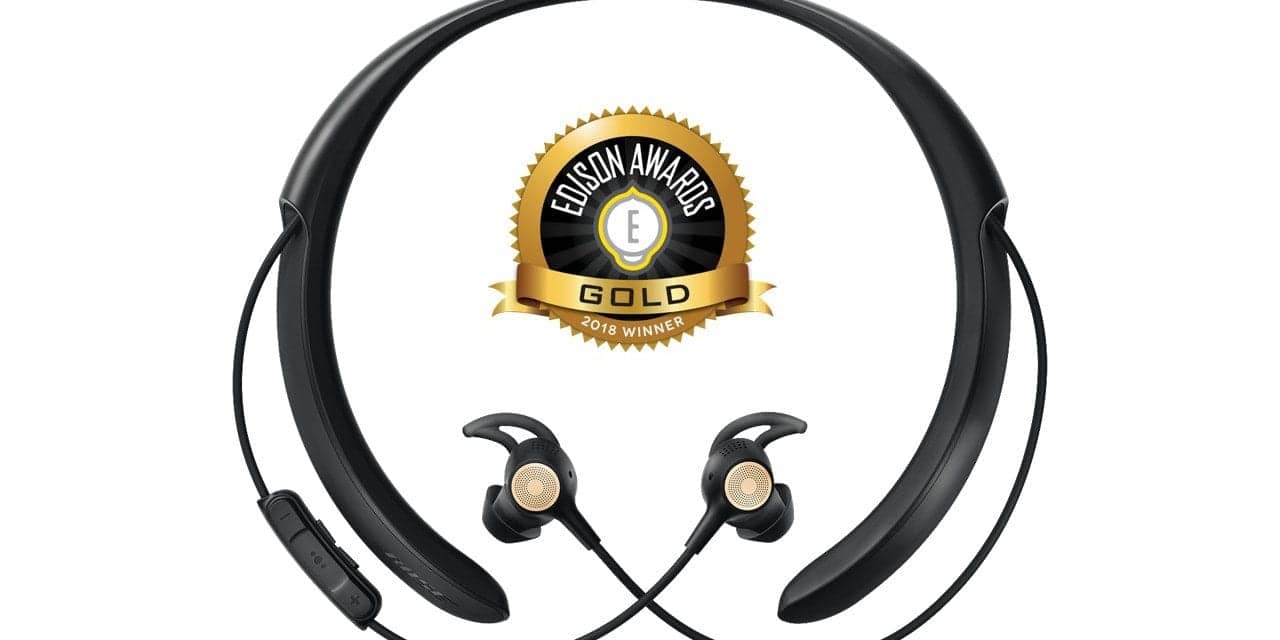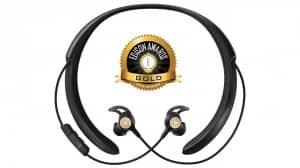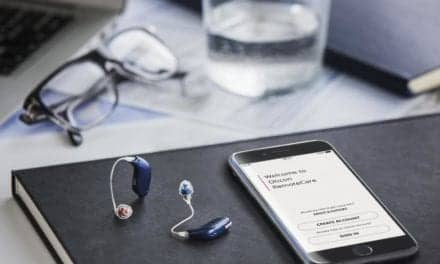Blog | Self-fit Hearing Aids
On Friday, October 5, the FDA granted de novo status to the Bose Hearing Aid, a self-fit hearing aid designed for mild-to-moderate hearing loss. What does this really mean? Well, it may end up being a pretty big deal. Here are a couple observations:
Is the Bose Hearing Hearing Aid an OTC hearing device?
No. In fact, it’s important to realize that it cannot be an OTC hearing device—primarily because the OTC hearing device classification does not yet exist. The FDA is currently analyzing the OTC issue and formulating regulations for the new device category, and it will propose regulation no later than August 2020, followed by up to 180 days of commentary and review. Comments from the FDA’s Srinivas “Nandu” Nandkumar, PhD, at last year’s ADA Convention suggested that the Agency is engaging in discussion with various stakeholders and will probably use most, if not all, of the allotted time leading up to its deadline of August 2020, which will be followed by a mandatory commentary period—making it possible that the final regulation will not be finalized until early 2021. Other factors work against a faster timeline. Traditionally, hearing devices have received a lower priority in comparison to other life-saving medical devices, and the FDA continues to have a backlog of issues requiring attention. Additionally, under a new law, the Agency now has to find two regulations to delete for every one it adds.
The Bose Hearing Aid is being described by the FDA as a self-fit hearing aid for mild-to-moderate hearing losses. It is possible that, after the FDA finalizes regulations for OTC hearing aids, Bose presumably could decide to reclassify it as an OTC hearing device (assuming it would satisfy the FDA’s yet-to-be-released OTC specifications).
Okay, it’s not an OTC hearing aid. So what is it?
It’s a hearing aid.
So, one would presume that—as with all Class I (eg, non-wireless air conduction aids) and Class II (eg, wireless air conduction and bone-conduction aids) medical devices—the FDA requirements for pre-clearance (ie, 510[k] applications), marketing and labeling, and Good Manufacturing Practices (GMPs) would apply. This would also probably mean that—in those 40+ states that require hearing aids to be dispensed by a licensed professional—the device would need to be distributed through a professional channel (eg, private practices, dispensing networks, big box/mass merchandisers with hearing aid dispensers, etc). However, in both practical and historical terms, there have been several means by which online and direct-mail companies have overcome this barrier.
But, as far as anyone can tell, all federal and state laws pertaining to hearing aid distribution would apply.
What does the Bose Hearing Aid look like and how does it work?
No one knows yet. This is all we really know about the Bose Hearing Aid per the FDA:
The Bose Hearing Aid is a user-fitted wireless air conduction hearing aid. Air conduction hearing aids work by capturing sound vibrations through one or more microphones. The signal is processed, amplified, and played back through an earphone placed in the ear canal. Patients can adjust the hearing aid through a mobile application on their phone. This technology enables users to fit the hearing aid settings themselves, in real-time and in real-world environments without the assistance of a health care professional.
The FDA de novo application is not a public document, and thus the specs or any other description of the hearing aid are currently unavailable. Bose did not respond immediately to a request for more information about the product by The Hearing Review for this blog post.
Several hearing-related blog sites have posted pictures of the Bose Soundsport or Bose Hearphones, which is a personal sound amplification product (PSAP) designed to “enhance” listening in noise, but (as a PSAP) is not intended to correct for a hearing loss. Here’s how Bose describes the Hearphone on its website:
Bose Hearphones are conversation-enhancing headphones that are specially designed to help you hear in louder environments. Active Noise Reduction makes any conversation in a noisy place easier and more comfortable, taking the edge off the noisy world. Focus on the voices you want to hear—and filter out the noises you don’t—so you can comfortably hear every word…
In general, the Bose Hearphones product is thought of as “one of the better” PSAPs on the market. It should be: it comes from a company with an excellent reputation for sound quality and some very good engineers and audiologists. However, industry critics/competitors point out that it’s designed more for “occasional use” than for the typical 8-16 hours a day needed for a hearing aid. It has a reported battery life of about 10 hours.
Hearing Review is skeptical that Bose is simply proposing the reclassification of the Hearphone as a hearing aid; rather, it seems a safer bet that Bose has created a hybrid, possibly a RIC/ITE version, that incorporates some or all of the Hearphone’s technology. But I’ll emphasize that this is only a guess. In defense of the other blogs, the FDA’s description does use the words “earphone placed in the ear canal” [my italics].
The FDA granted de novo status to the product based on a Bose clinical study, as cited by the FDA in Friday’s news release:
In authorizing marketing of the Bose device, the FDA reviewed data from clinical studies of 125 patients, which demonstrated that outcomes with self-fitting of the Bose Hearing Aid are comparable on average to those with professional fitting of the same device with respect to the amount of amplification selected, speech in noise testing and overall benefit. In addition, when participants self-fit the Bose Hearing Aid, they generally preferred those hearing aid settings over the professionally-selected settings. The Bose Hearing Aid has been labeled to inform the consumer when to consult a hearing health care professional.
What does FDA de novo status mean?
According to the FDA website:
The De Novo process provides a pathway to classify novel medical devices for which general controls alone, or general and special controls, provide reasonable assurance of safety and effectiveness for the intended use, but for which there is no legally marketed predicate device. De Novo classification is a risk-based classification process.
Devices that are classified into class I or class II through a De Novo classification request may be marketed and used as predicates for future premarket notification [510(k)] submissions.
What that means is, if you have a medical device that can be shown to be safe and effective for consumer use and that doesn’t currently “fit into” any of the current FDA Class I or Class II medical device categories (or is a Class III higher-risk device that your company deems as “safe”), then you can apply to FDA for a new category.
Could there be more products like this? Can other companies apply for this same “self-fit hearing aid” status?
Quite possibly. As the result of the de novo classification, the next action from the FDA will be the release within the next month of a Special Controls document governing the requirements applicable to subsequent companies. FDA will also release details of the Bose clinical study.
Did Bose do this out of frustration with the possible 2-year wait for an OTC class, or is there some other reason?
First, Bose was not available for comment at the time of this publication, so we don’t know. But, indeed, one can see how a 2-year wait to market entrance could figure into it. However, there would be nothing from stopping Bose from marketing the new hearing aid as a PSAP (as many other companies do), except for the corresponding restrictions regarding marketing and intended use (ie, addressing actual hearing loss). It would appear that their Hearphone is a fairly successful product.
There is another intriguing angle, as well. Some of the literature —including an article coming out this week in Hearing Review online first—have suggested that the majority of available PSAPs are incapable of matching a prescriptive target and may not be appropriate for more than mild hearing losses. A recent consensus statement from the four major dispensing organizations—AAA, ADA, ASHA, and IHS—recommended that OTC hearing aids be confined to hearing losses of 26-55 dB HL, and have a high-frequency average full-on gain limit (HFA-FOG) of 25 dB (in a 2cc coupler) at an input level of 50 dB SPL.
So…if Bose has developed a hearing aid that is suitable for self-fitting of moderate hearing loss, and believes the FDA might eventually side with the hearing organizations relative to their proposed <55 dB HL limit for OTC hearing aids—which would be a conservative measure in line with past Agency policy—it may be more logical first to “work within” the already-established Class I and Class II device hearing aid categories and also market to those consumers who are most likely to be actively seeking a hearing device (ie, those with moderate losses and above). These self-fit hearing aids could be marketed as hearing aids indefinitely and/or until the FDA defines what an OTC hearing aid must look like, probably before 2021.
Again, all of this is speculation.
If your company already makes a “self-fit hearing aid”, what would be the advantage of marketing an OTC hearing aid?
The key advantage would appear to be direct-to-consumer access without the need for a professionally-affiliated dispensing channel. This would potentially free a self-fit hearing aid from having to be dispensed only at locations like independent hearing clinics, Costco, Wallgreens, etc, broadening its reach to the wider marketing world of, well, anywhere you might imagine. However, it’s unknown how the FDA will define OTC hearing aids, and any corresponding specifications and regulations the FDA and FTC might require for GMPs and return policies, marketing and labeling, etc. Additionally, one would presume that an FDA-approved Class I or Class II self-fit hearing aid would automatically qualify as an OTC hearing aid once the specifications for the latter are established.
Update: Several items have surfaced regarding the Bose Hearing Aid, its distribution, and subsequent special controls for the new FDA class of self-fitting devices after this blog post was published on October 9. Please see the subsequent blog, “Gleanings from Bose Leaders about the Bose Hearing Aid,” published online on October 18, and the news story “New Self-fitting Hearing Aid Class and Specials Controls Described by FDA Letter” published on October 21.
What do you think? Please provide your thoughts below or send them to [email protected].







I wear a hearing aid for mild hearing loss.
They cost me 5,000 for two. I am told that I have to replace them after only 6 years. I will not be able to afford them since I retired. We need a hearing aid sold over the counter that poor people can afford. Many older people I know will never be able to afford a hearing aid, unless over the counter aids become available. Why do the aides have to be so expensive? Service providers where I live provide very poor service and charge so much.
I have severe hearing loss. Will Bose be manufacturing a hearing aid available OTC that will assist us who cannot now hear sounds quieter than 65-70 dB, in conditions with NO background noise?
I also would like to make one other modification to the Bose style: I would like an over-the-head band with a built-in solar recharging strip like those used in calculators, only stronger, of course. It could be called the “Hearband”. I would like mine in bright green, please.
It is long past time for hearing loss to become a VISIBLE disability. I am not ashamed or embarrassed about my severe hearing loss. I did nothing to cause it. People around me need to help me communicate now, by looking at me when they talk so I can read their lips. A HEARBAND would be a visual signal that I have hearing loss, and that I need their help to communicate with them effectively.
I currently wear two different styles of Widex BTE hearing aids, purchased two years apart. They cost $3300 in total and since I will soon be on government pension only, I won’t be able to afford to replace them.
I call on all hearing aid makers to bring hearing loss out into the light. HEARBANDS would make hearing loss accepted, and able to be accommodated in the same way that eyeglasses have made vision loss accepted and easily accommodated.
Hearing that Bose is entering the hearing aid field is a truly exciting development.
As a passionate hearing healthcare practitioner, I am always looking for new ways to ‘get through to’ the majority of the hearing loss sufferers that are either living in denial or are traumatised by the idea of wearing hearing aids due to the stigma attached.
As an industry we have not been very successful in overcoming these two challenges and I would love more serious, big players like Bose, to get involved.
This can only benefit everyone involved.
PS: I have always enjoyed the sound quality of my Bose speakers.
The biggest problem with De-Novo FDA approval and distribution of this Bose product is the “perceived” mild-moderate hearing loss. How does one “perceive” a historically researched and determined classification system for hearing loss that equates to mild to moderate — they CAN’T!! Our hearing is one of our organs that can be easily and quickly damaged by “guessing” what is “loud enough” vs “too loud” here. The organ of hearing, the cochlea, is directly connected to the vestibular balance system — you are playing with a finely tuned system vulnerable to all sorts of insults by playing a “guessing” game. Shame on the FDA for not taking into consideration the seriousness of potentially damaging not only the structure/anatomy of the ear (which is one of our body’s Organs housed very close to the brain) but the physiology of a very complex organ.
We can’t afford hearing aids! Who cares how precious hearing is and your opinion that only a licensed professional should fit them if we can’t afford them? For the mayority of Americans that go through life in quasi silence because they CAN’T AFFORD hearing aids, this is HOPE.
To be clear, it is not my opinion or the opinion of many of the professional organizations that only licensed professionals should be able to fit what will soon be called an OTC hearing aid. However, one of the many debates around OTC that the FDA will need to resolve is how much gain (volume) these devices will be able safely provide for consumers.
So what about IQBuds Boost by Nuheara? They already tick all the boxes.